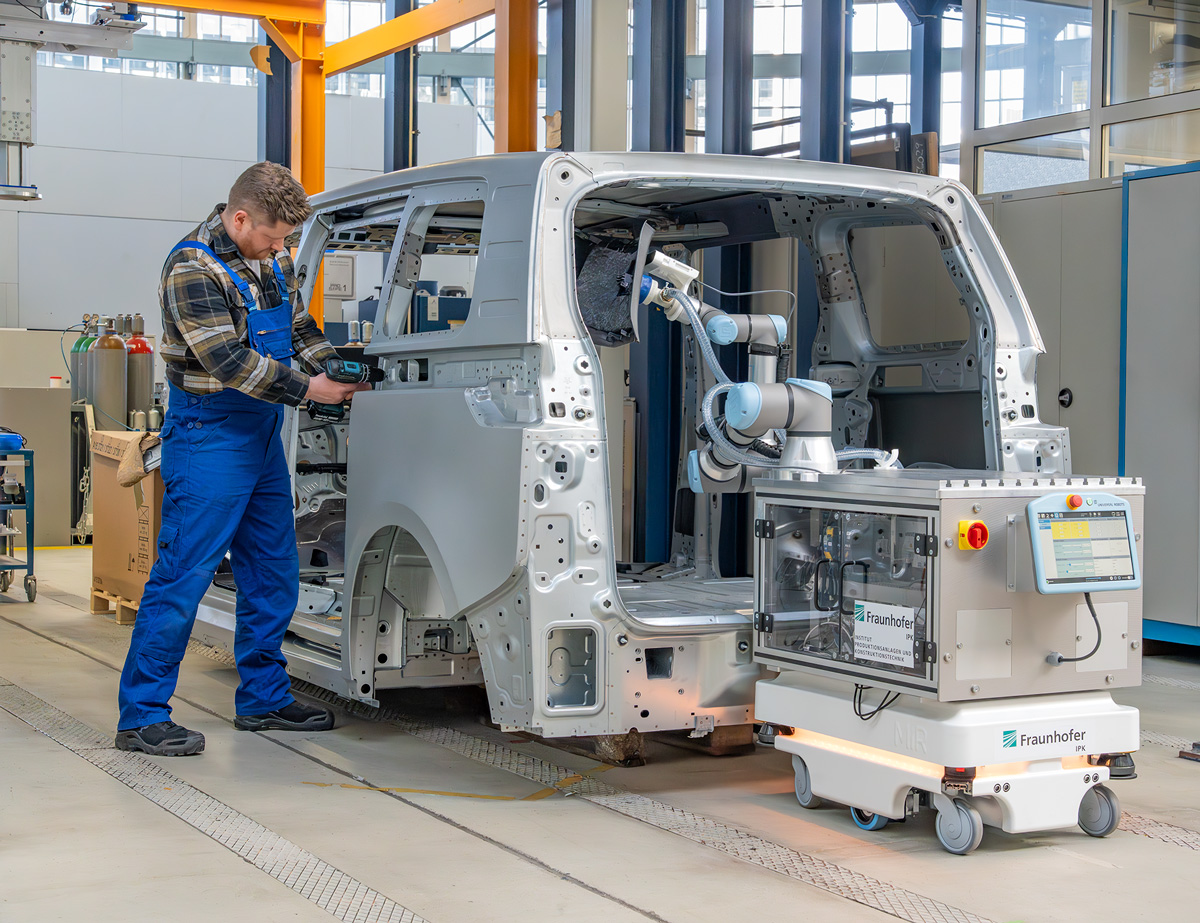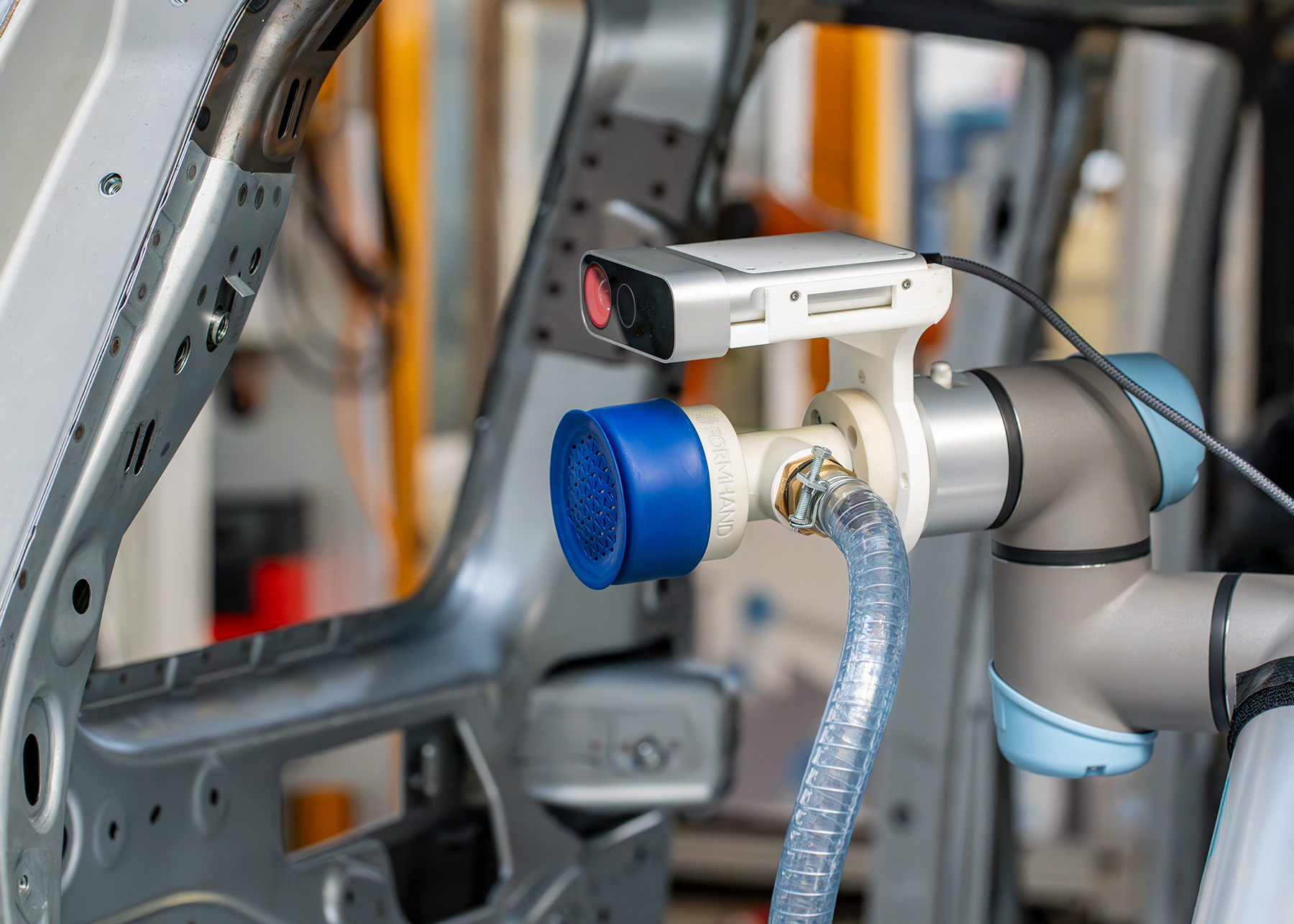A single car contains thousands of components of different geometries. Soon, robots will be able to handle their delicate assembly – flexibly and autonomously.
In vehicle manufacturing, entire subassemblies have long been fitted fully automatically. However, the systems used are often specialized to perform only a few or even just one single task. The resulting production lines are static and no longer meet the current requirements for assembly systems. Fact is, products are diversifying and markets are changing at an accelerating pace. This necessitates flexible systems that are highly mobile, adaptable and modular. This paradigm shift is not only a major challenge for automobile manufacturers, but also an exciting development area with a high potential for innovation. Together with Volkswagen Nutzfahrzeuge, researchers at Fraunhofer IPK have developed a model system for testing flexible approaches. Assembling interior vehicle paneling, a process that has been completely manual up to now, could soon be automated and serve as proof of the potential of autonomous assembly technologies.
Static solutions: a thing of the past
One aspect of flexibility that was particularly important to the industrial partner is the solutions’ independence from location. The »Tend-O-Bot« robot system has already been used for a wide range of applications, from machine tending to human-robot collaboration. It consists of a mobile platform with an integrated robot arm and is able to independently navigate through the production facility thanks to modern mapping and localization algorithms. Additional sensors on board ensure that the mobile robot can react flexibly to obstacles and avoid collisions. Building on this technology, it can also reliably detect and localize assembly-relevant targets, in this case the vehicle body. Based on its visual assessment of the assembly situation, the system can even determine which assembly steps have already been carried out and which still need to be done.
After detecting the body and moving to the correct position, the Tend-O-Bot must precisely capture the assembly environment. In a multi-stage positioning process – from rough to fine – the system first estimates the location of its target based on AI models and refines it using conventional sensor processing at close range to achieve an accurate result. This enables the mobile manipulator to later approach the necessary assembly positions independently and flexibly with precision down to the millimeter.
 Fraunhofer Institute for Production Systems and Design Technology
Fraunhofer Institute for Production Systems and Design Technology

